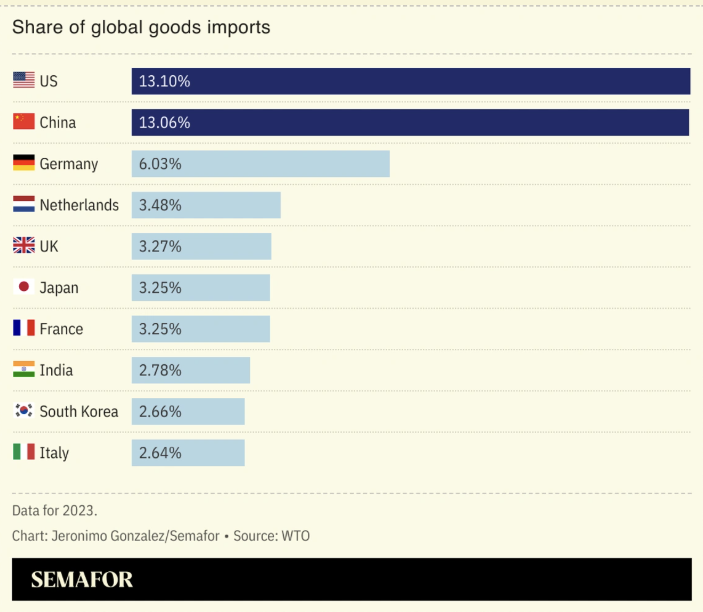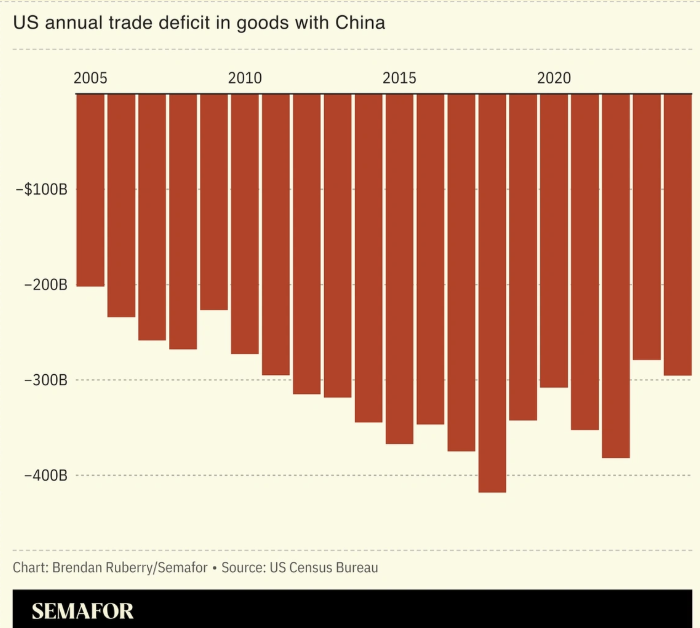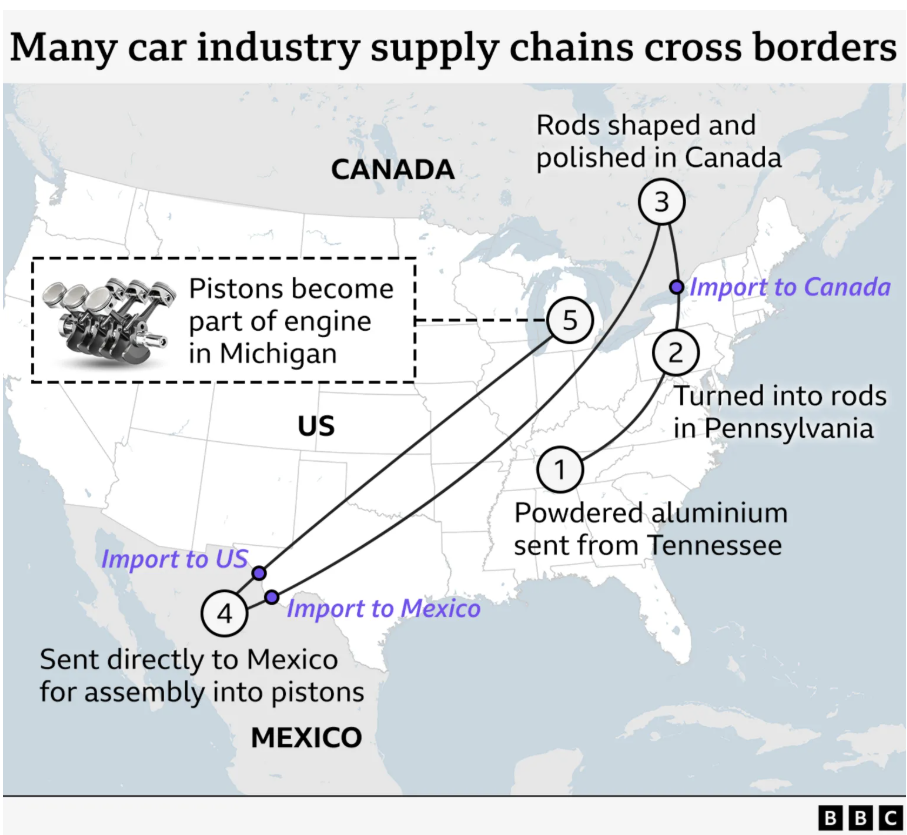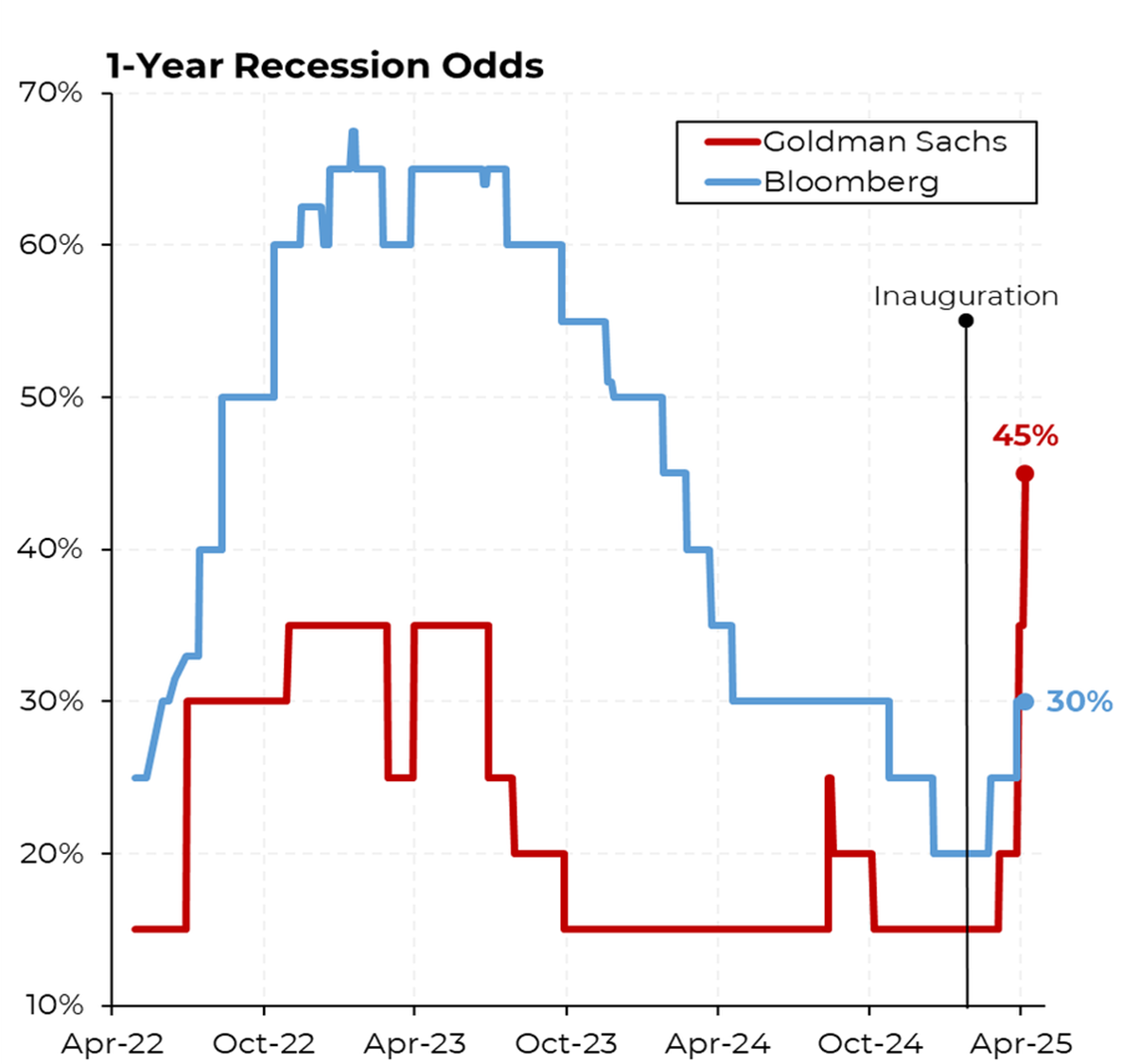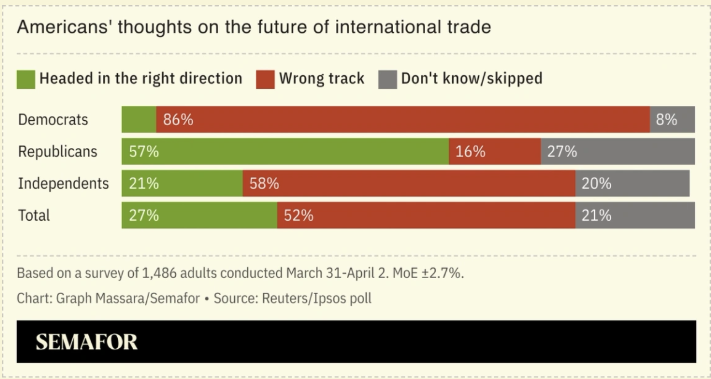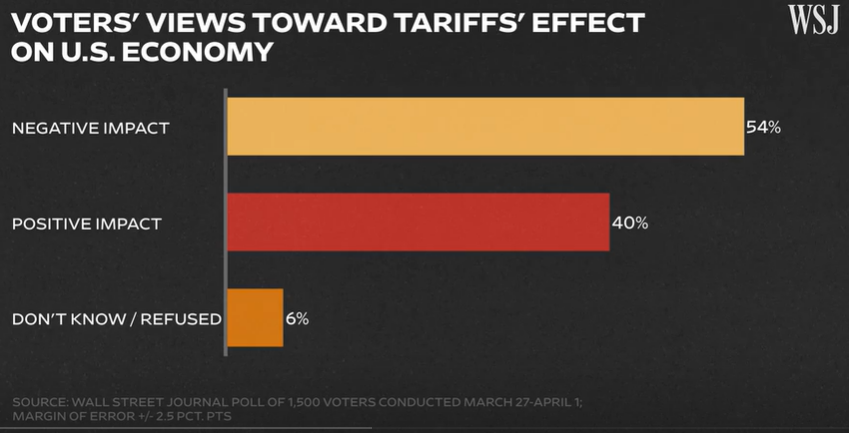The Trump Tariffs, Their Impact, and US Public Opinion
The United States is one of the world’s largest import markets. However, it runs a large merchandise trade deficit, particularly with China, Mexico, and Vietnam, and its deficit with the EU has grown in the last decade. Given the Trump administration’s recent trade policy moves, the average US tariff rate now exceeds that of the Smoot-Hawley tariffs during the Great Depression. Donald Trump’s game plan has been to keep other governments off balance, but Washington may have less leverage than it assumes. It is less dependent on world trade than any other G20 nation and is not party to most of the world’s fastest growing trade corridors. Moreover, the tariffs threaten inflation and increase the risk of a recession in the United States.
Recent public opinion studies show that, in general, Americans see trade as an opportunity. But they also think that it has destroyed jobs and lowered wages. Americans support tariffs on China but not on Canada, Europe, or Mexico. A majority of US voters think Trump’s tariffs will have a negative effect on the American economy, with two-thirds of the public believing that they will raise prices.
The following slide deck, assembled by Visiting Senior Fellow Bruce Stokes, draws on multiple sources to provide an overview of US trade-related data and American, Canadian, and European public opinion on trade-related issues.
And The U.S. Has Large Trade Deficits With China, Mexico and Vietnam Among Others
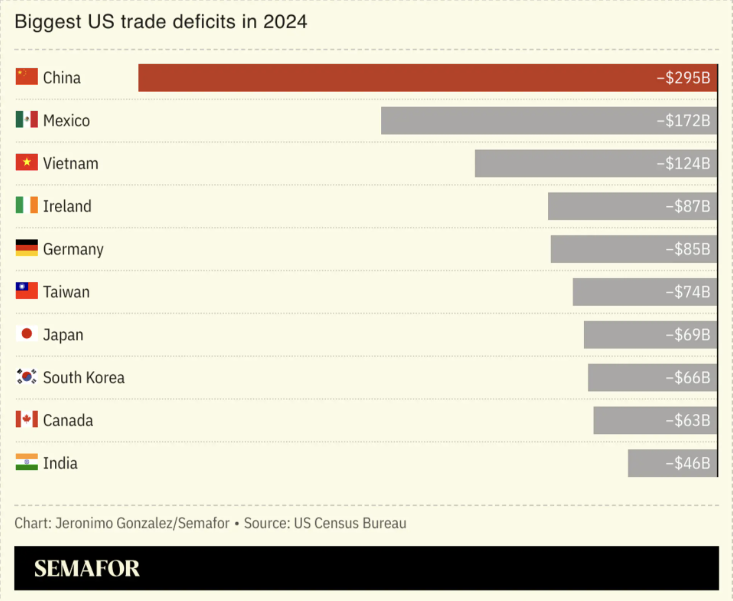
Source: Semafor and US Census Bureau.
And The U.S. Is Increasingly Dependent on Chinese Imports, But China Is Less and Less Dependent on Exports to the U.S.
Source: IMD.
The U.S. Goods Trade Deficit With the EU Has Grown in the Last Decade
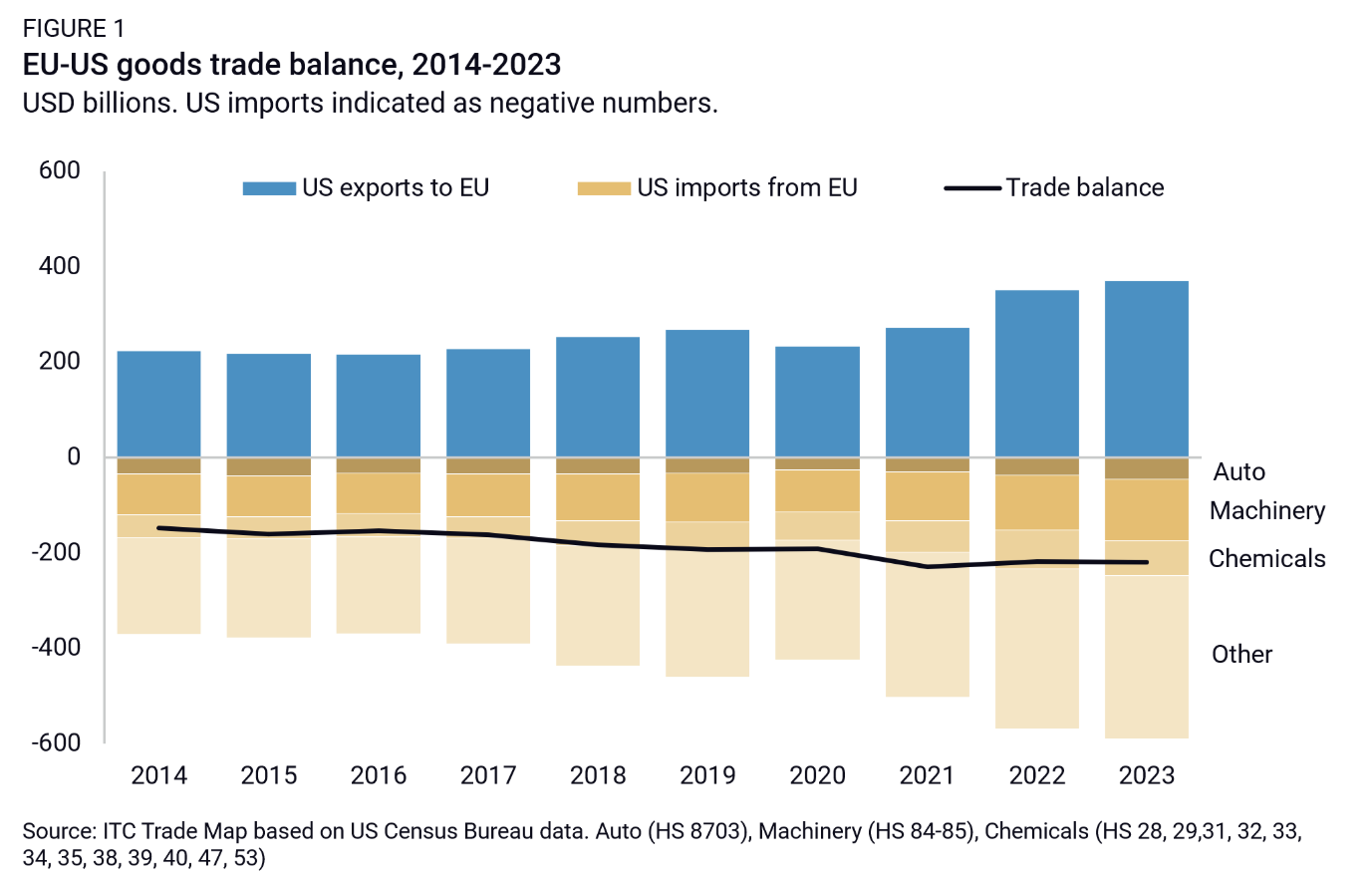
Source: Rhodium Group and US Census Bureau.
U.S. Manufacturing Employment Has Been Declining Since WWII, But NAFTA and China Are Not the Main Reason
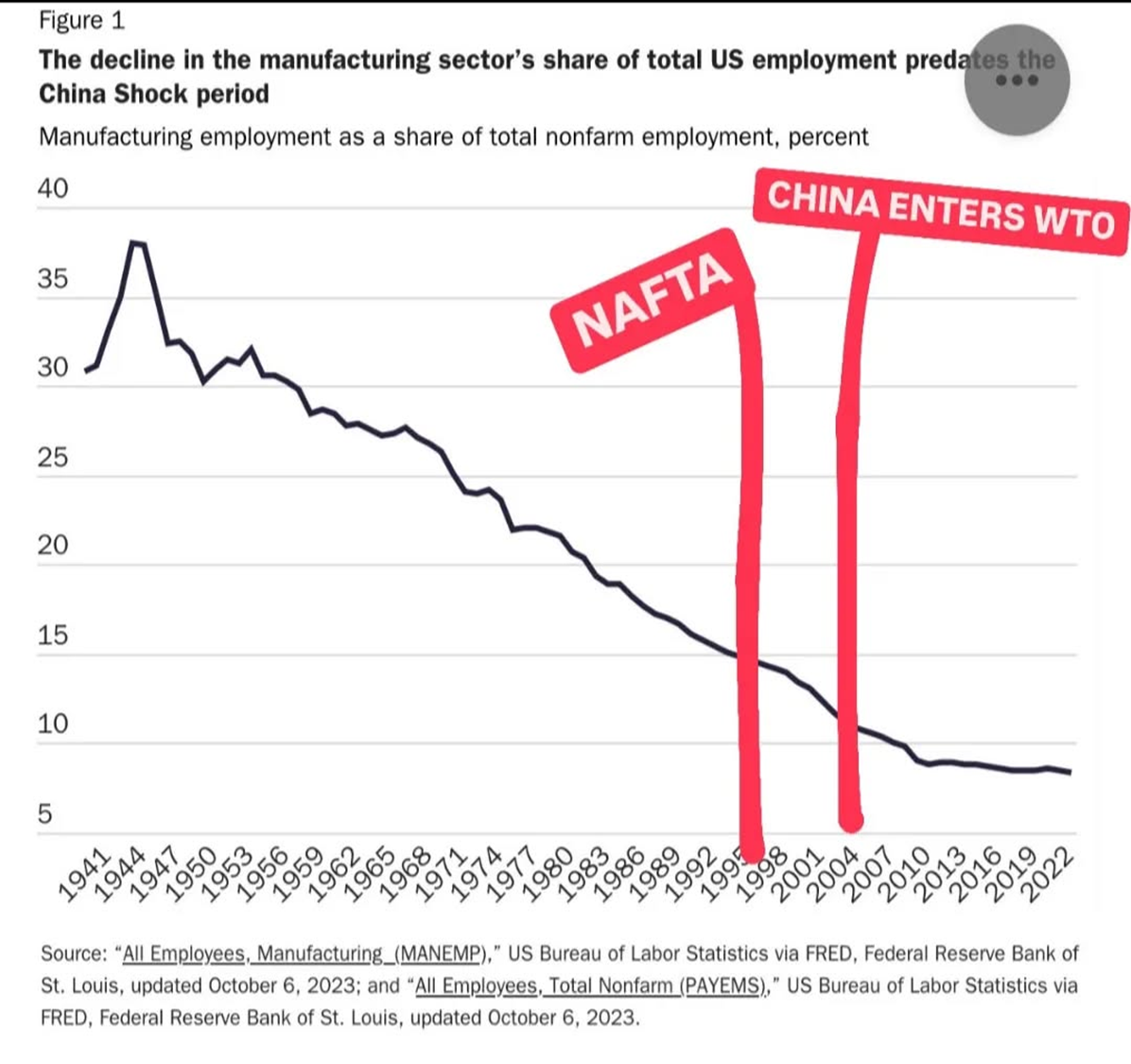
Trump Has Countered Relatively Low Average Tariffs on U.S. Exports With Fairly High Duties on Foreign Goods

Source: X.
And The Average U.S. Tariff Rate is Now Higher Than in the Wake of Smoot-Hawley During the Depression
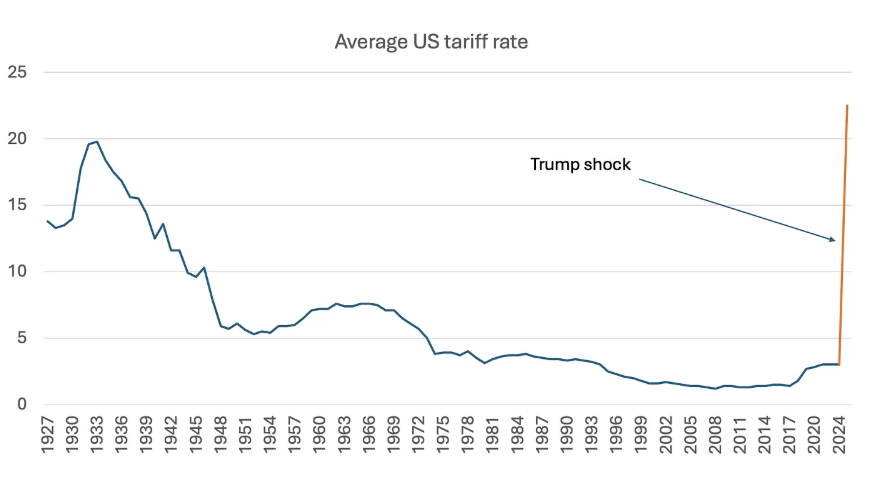
Source: USITC and Yale Budget Lab
Trump’s Game Plan Has Been to Keep Foreigners Off Balance: He Has Escalated the Trade War Nearly Every Three Days
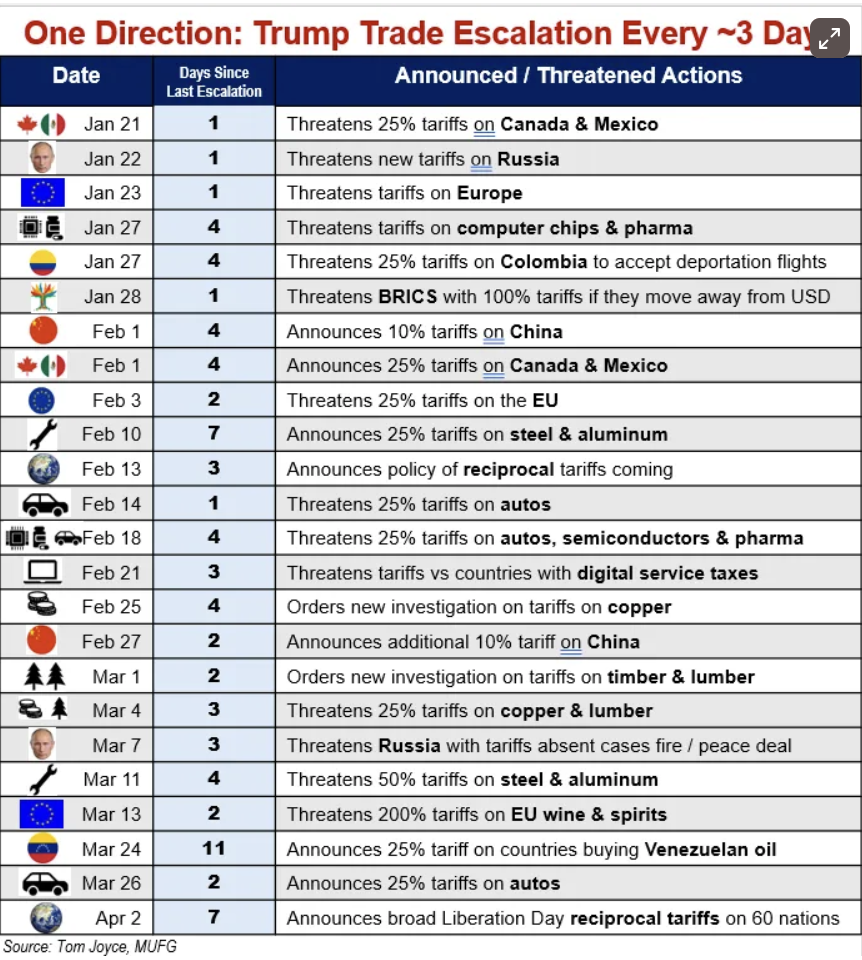
Source: Tom Joyce, MUFG
And His Negotiating Advantage is That the U.S. is Less Dependent on World Trade Than Any Other G20 Nation
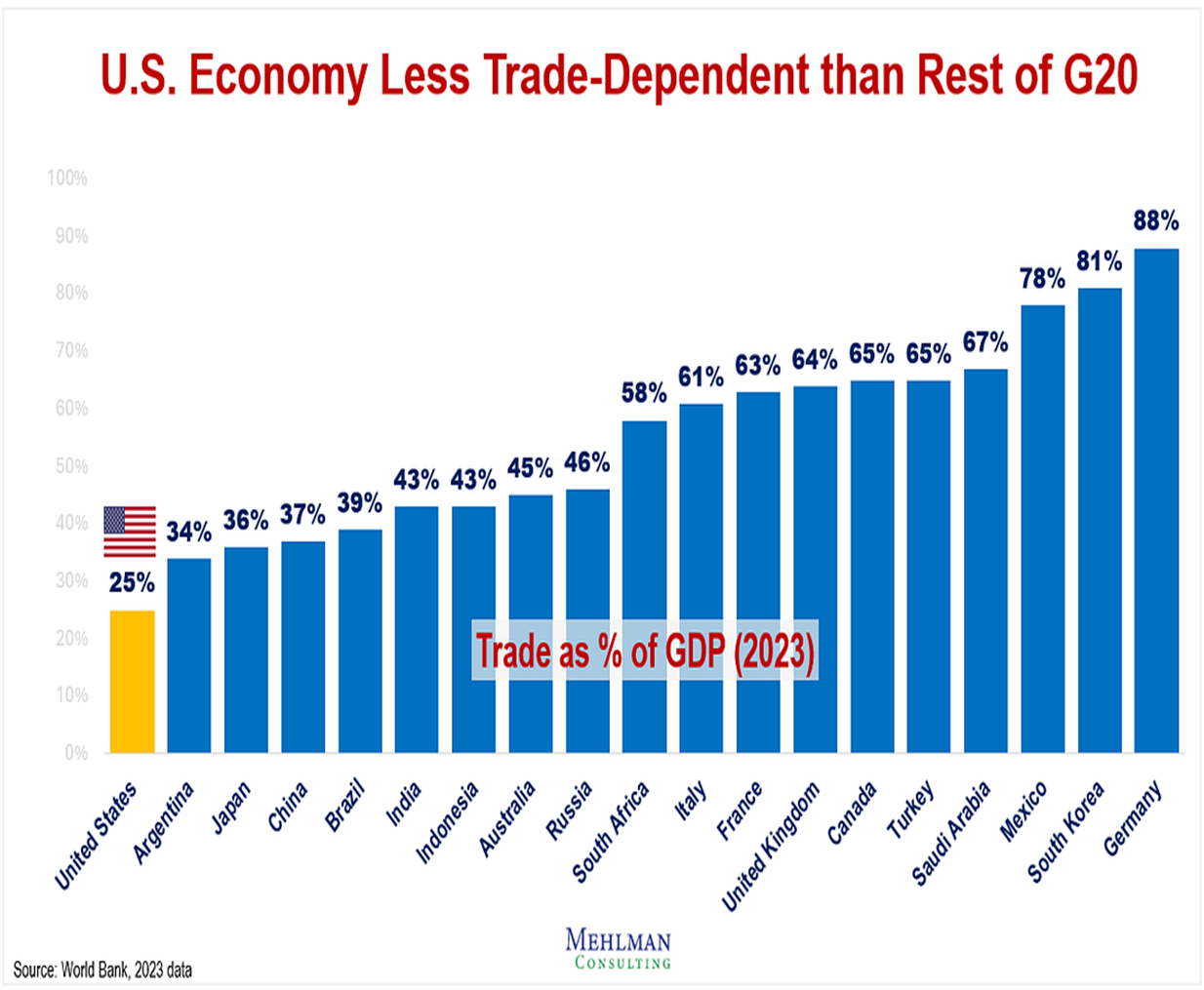
Source: Mehlman Consulting, World Bank
But U.S. Leverage is Waning, America is Not a Party to Most of the Fastest Growing Trade Corridors in the World
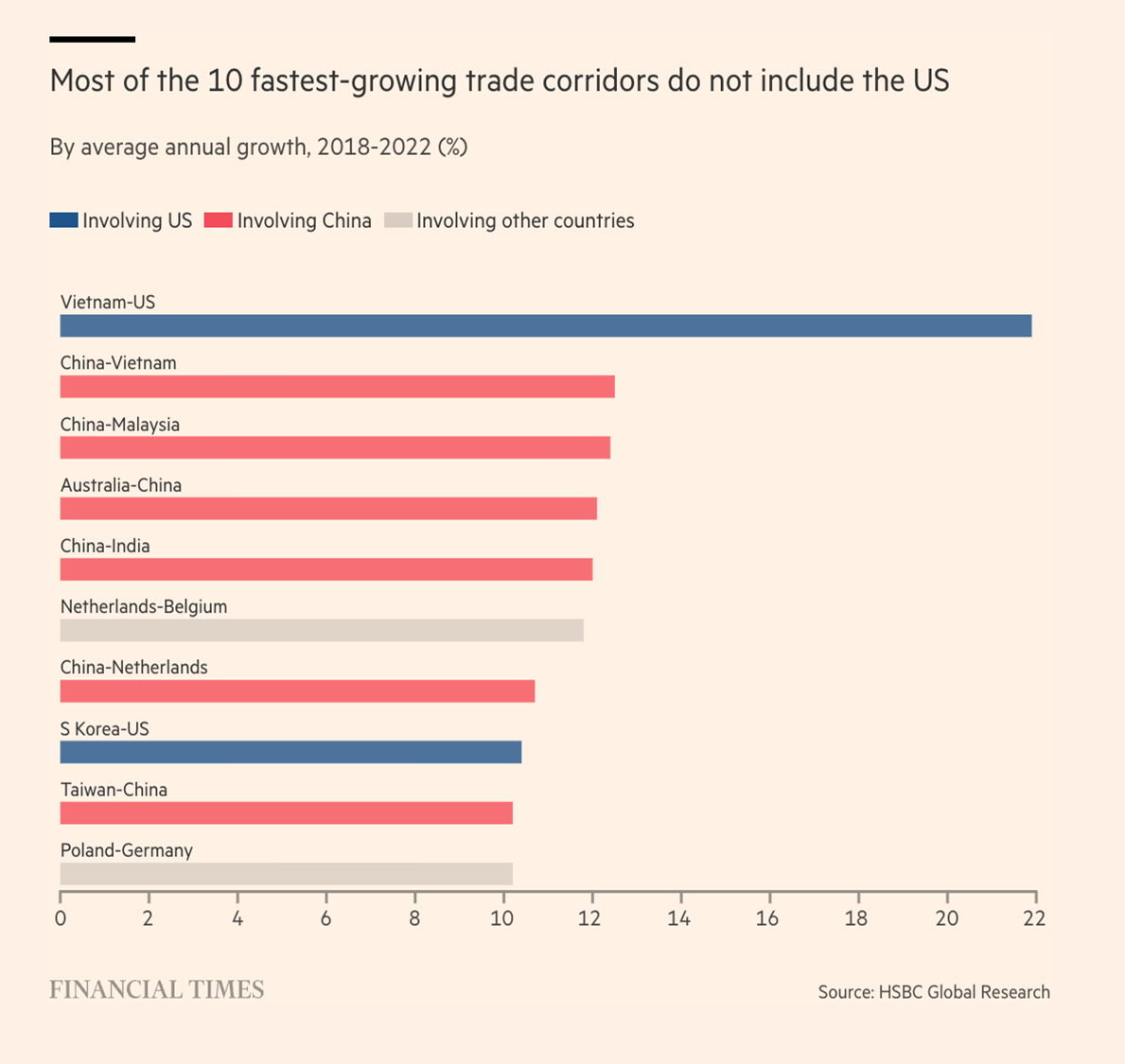
Source: Financial Times
And The Trump Tariffs Will Complicate Sourcing for American Manufacturing, Raising Costs
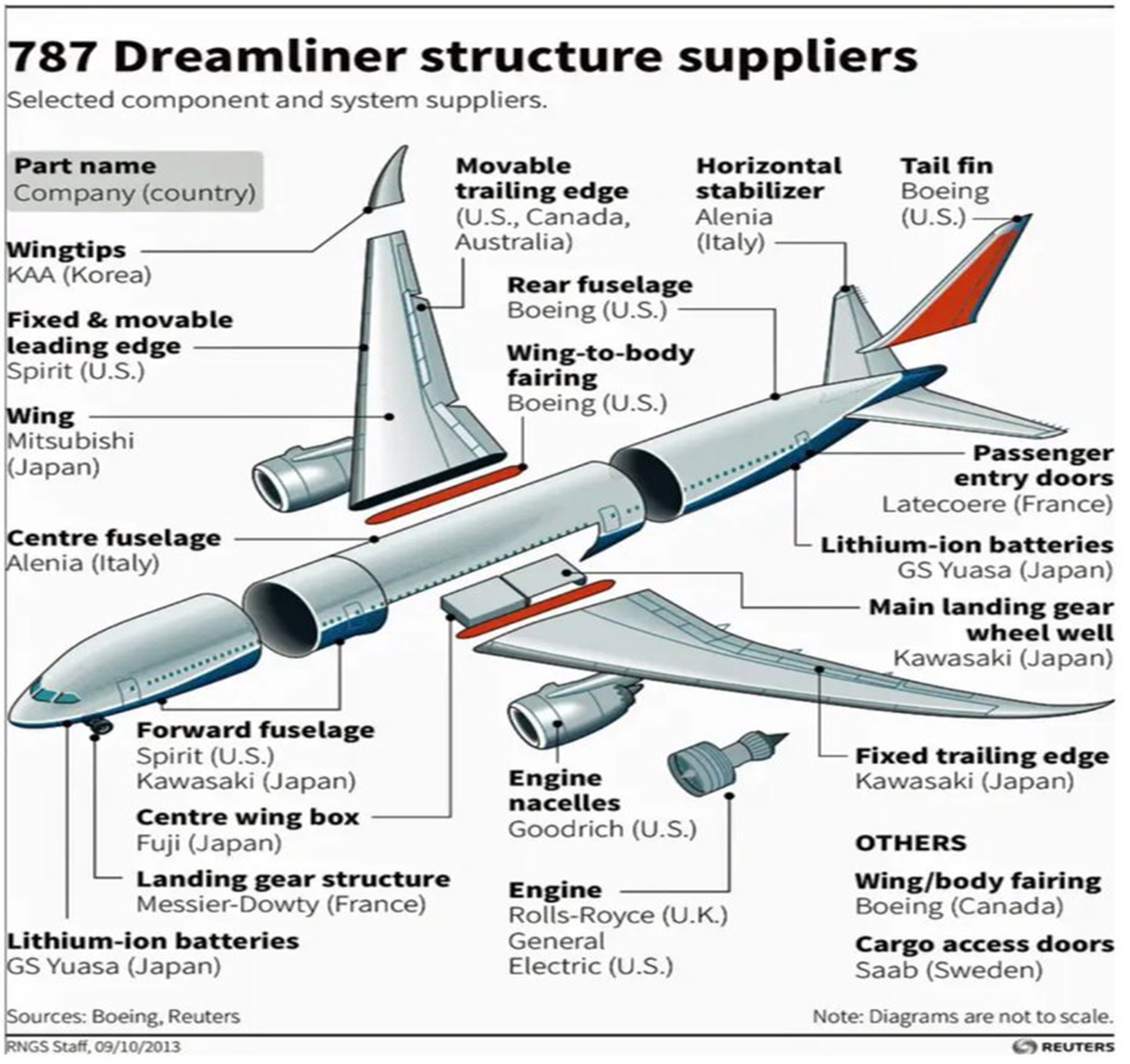
Source: Business Insider, Boeing, Reuters
Americans’ Trade Views
In Principle, More Americans See Trade As an Opportunity Than at Any Time This Century
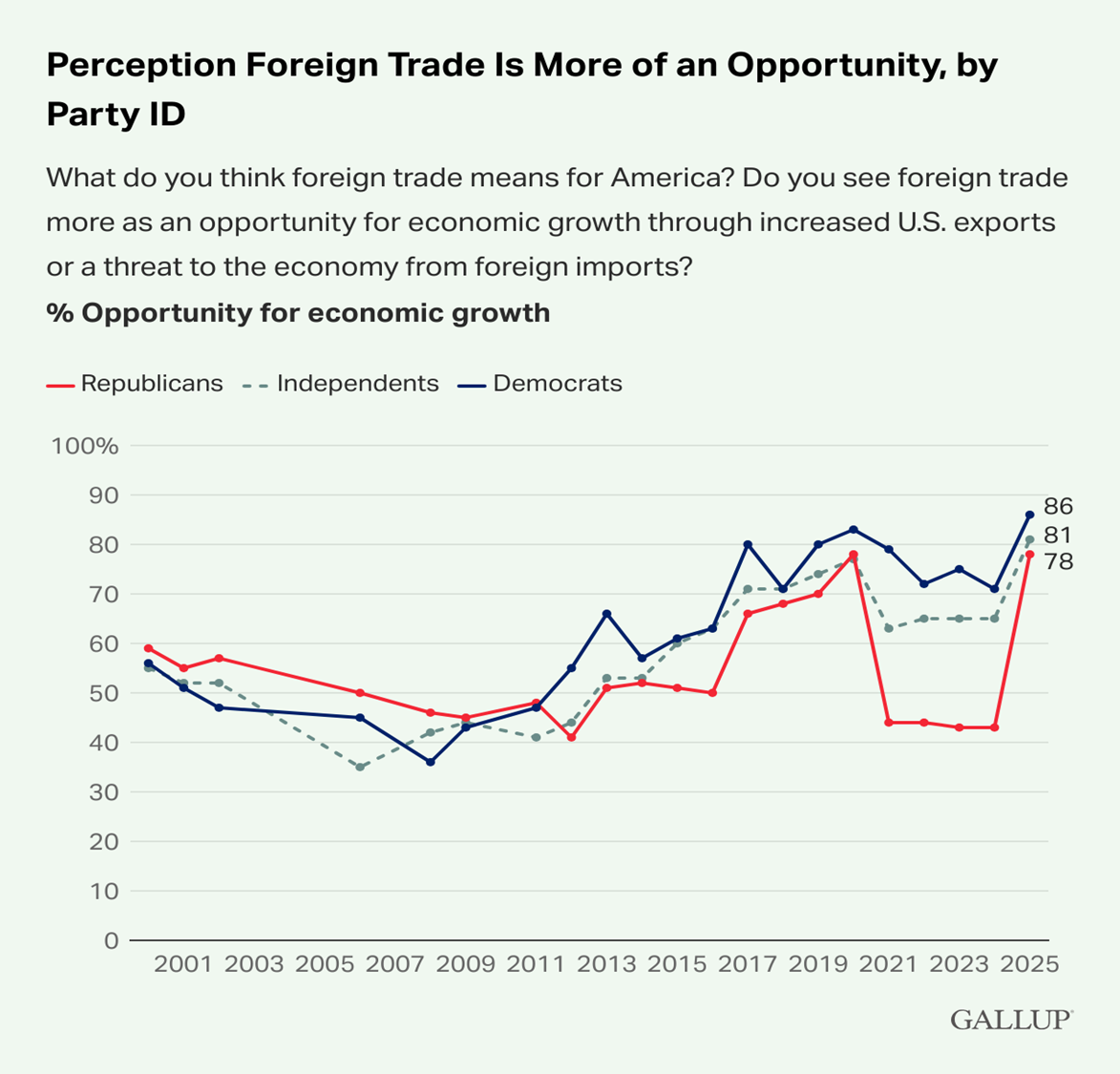
Source: Gallup.
But While They Believe Trade Has Boosted Consumer Choice and Innovation, They Also Think It Has Destroyed Jobs and Lowered Wages
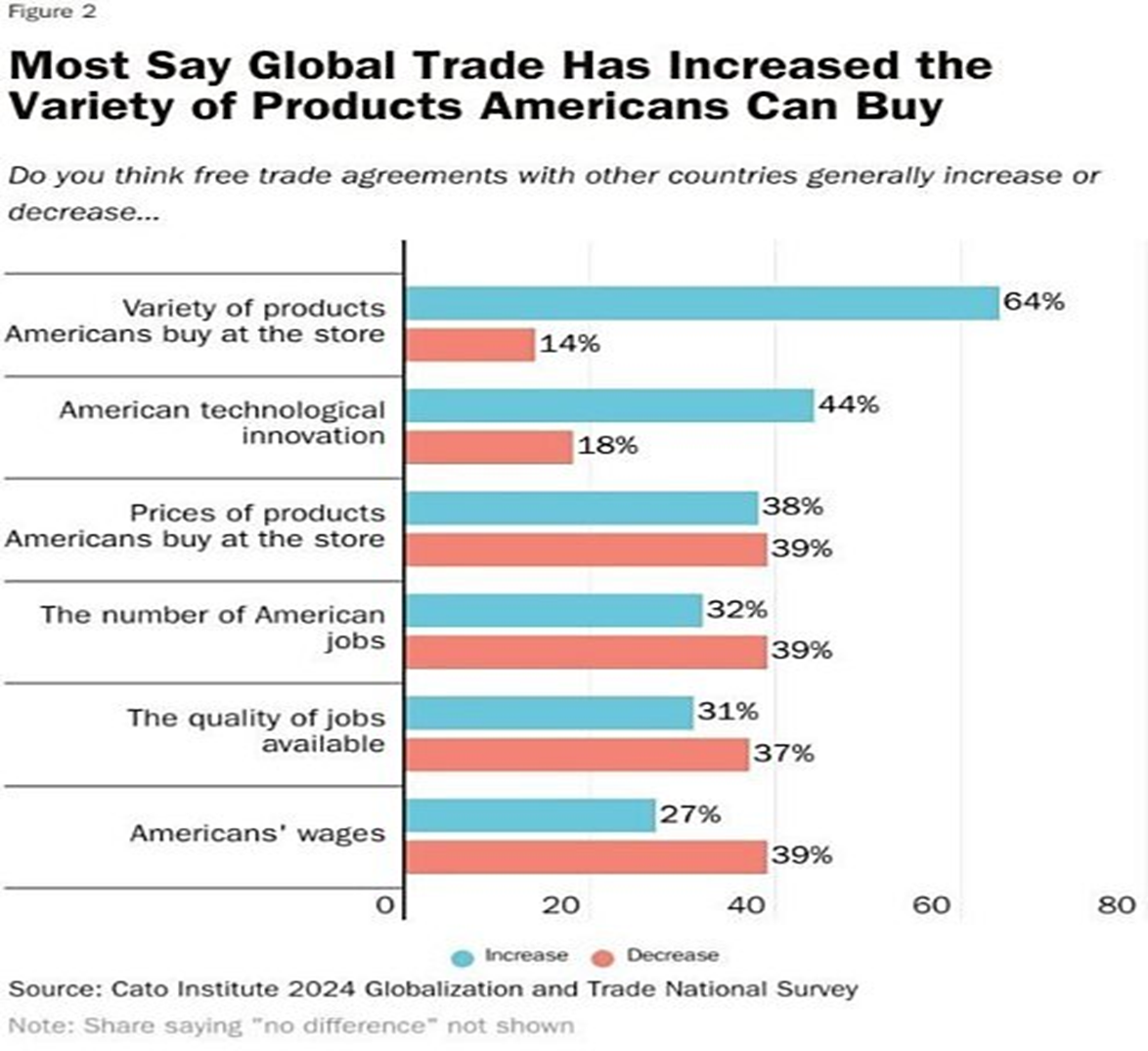
Source: CATO Institute.
Tariff Perceptions Are Driven by Partisanship: Only 20% of Republicans Say Tariffs Do More Harm Than Good, Nearly 90% of Democrats Disagree

Source: Ipsos.
Before the Tariff Announcement: 40% of Americans Believed Trump Would Bring the “Right Kind of Change” on Trade and Tariffs, 30% Said “Wrong Type of Change”
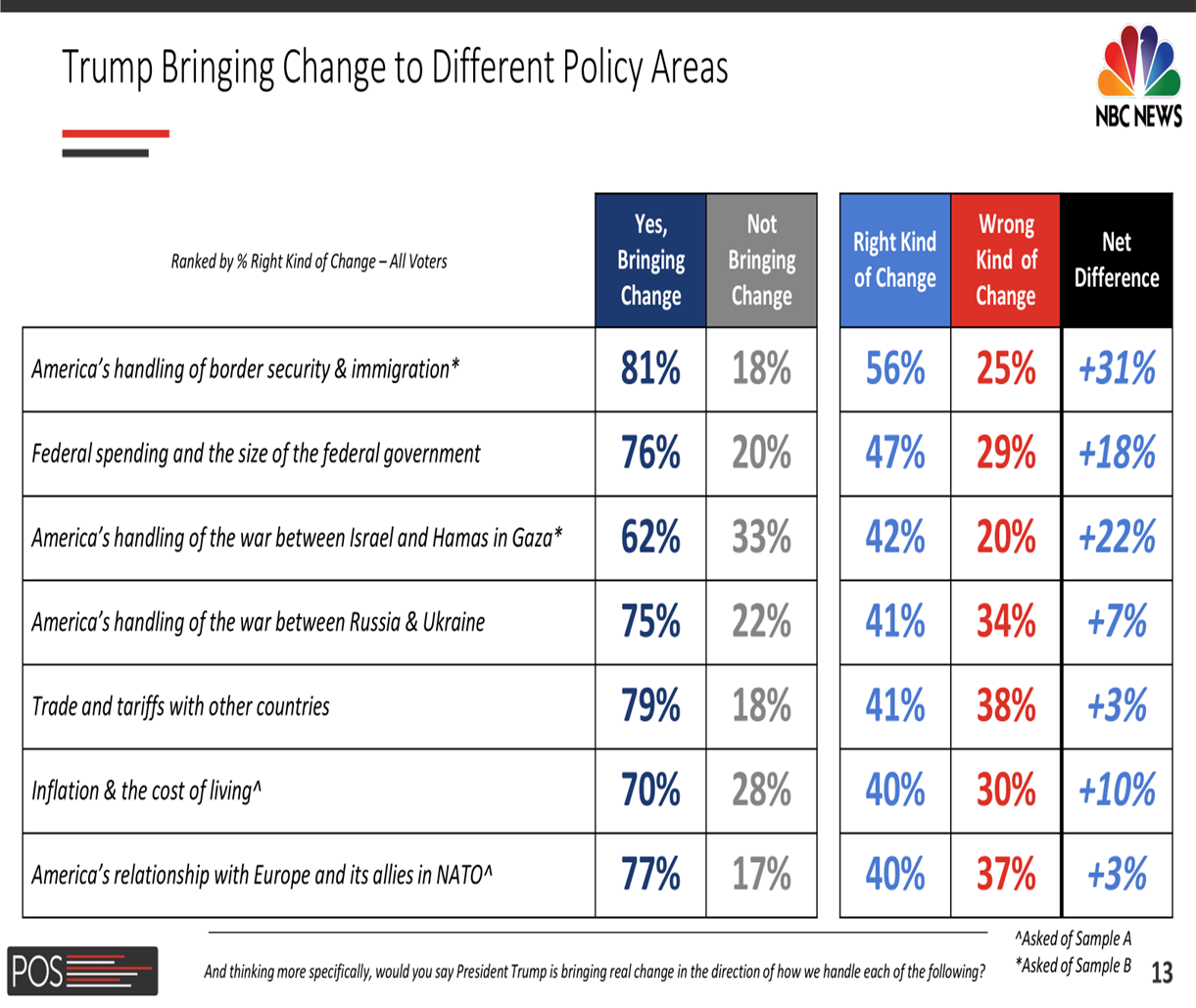
Source: NBC Pollsters.
Among All Americans There is Support for Tariffs on China, But Not Canada, Europe or Mexico

Source: CBS News.
A Majority of Americans Oppose Trump’s Tariffs, But Three-in-Four Republicans Support Them
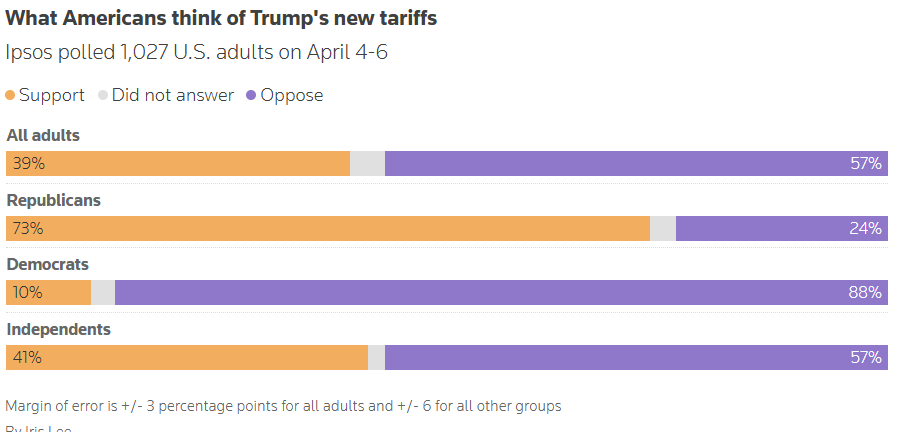
Source: Reuters.
European and Canadian Views on Trump’s Tariffs
A Third or More of Europeans Strongly Support Retaliatory Tariffs on U.S. Products, And This Was Before the Trump Tariffs Were Announced
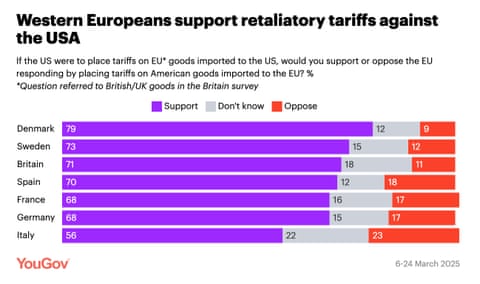
Source: The Guardian, YouGov.
Similarly, Two-thirds of Canadians Favor a Forceful Response to the Trump Tariffs
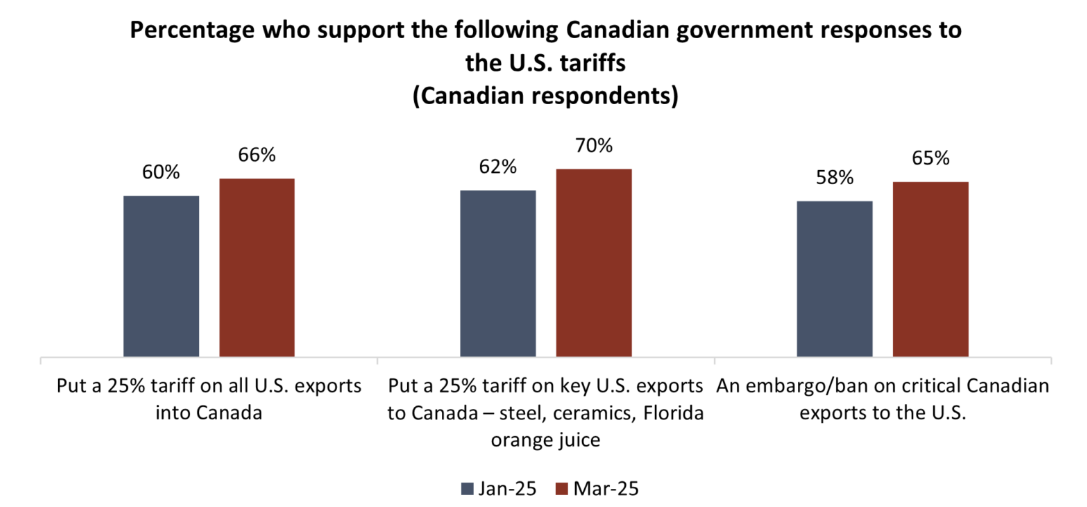
Source: Angus Reid Institute.

